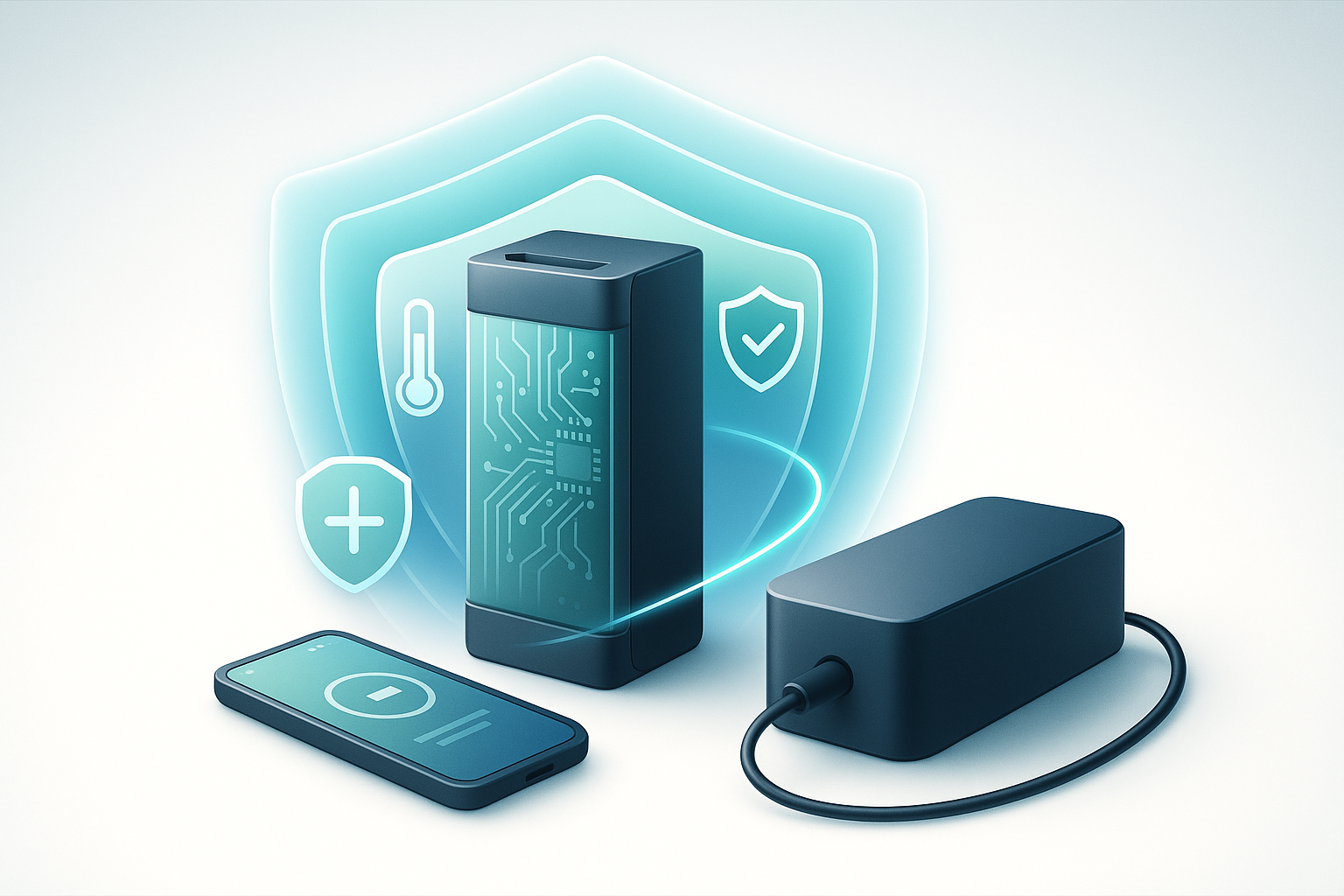Your e-bike is more than just a bike; it's an investment in freedom, fun, and efficient transportation. At the heart of this experience lies its battery, a powerful component that enables those effortless rides. To keep your e-bike performing its best and to ensure your battery lasts as long as possible, the charger you use plays a crucial role. While standard chargers do the job, "smart" e-bike chargers go above and beyond, acting as vigilant guardians of your battery's health.
But what exactly makes a charger "smart," and how do these intelligent devices protect your valuable e-bike battery? Let's uncover the clever ways smart chargers work behind the scenes to extend your battery's life and ensure your safety.
The Brains Behind the Charge: Understanding Smart Charger Technology
At its core, a smart e-bike charger isn't just about pushing electricity into your battery. It's equipped with a microchip and software that allow it to "communicate" with your e-bike's Battery Management System (BMS). The BMS is the battery's own internal guardian, monitoring its cells, temperature, and overall state. This constant dialogue between the smart charger and the BMS is what makes the charging process so much more sophisticated and protective.
This intelligent communication allows the smart charger to adapt its charging strategy in real-time, providing precisely what the battery needs at any given moment, rather than a generic, one-size-fits-all approach.
Going Beyond Basic Charging: Precision for Peak Performance
Unlike simpler chargers that might continuously feed power even after a battery is full, smart chargers are programmed to understand the delicate chemistry of lithium-ion batteries and optimize their care.
Key Protective Features of Smart E-Bike Chargers
Smart chargers employ several crucial mechanisms to safeguard your e-bike battery:
1. Overcharge Prevention: The Silent Battery Killer
One of the most damaging things for a lithium-ion battery is overcharging. Continuously feeding power to a battery that is already full can lead to excessive heat buildup and stress on the internal cells, accelerating degradation and reducing its overall capacity over time.
Smart chargers actively monitor the battery's voltage and current. Once the battery reaches its full charge (typically around 4.2V per cell for lithium-ion), the smart charger automatically stops the charging process or switches to a gentle maintenance mode (often referred to as "float charge" or "trickle charge" for other battery types, though for Li-ion, it's more about completely cutting off the charge to prevent damage). This precise cut-off prevents the battery from being subjected to unnecessary stress, significantly extending its lifespan.
2. Temperature Monitoring and Control: Keeping Things Cool
Lithium-ion batteries are sensitive to extreme temperatures. Charging in very hot or very cold conditions can severely impact their health and even pose safety risks. Smart chargers often feature built-in temperature sensors that monitor the battery's internal temperature throughout the charging cycle.
If the temperature rises above a safe threshold (due to fast charging, ambient heat, or an internal issue), the smart charger will automatically slow down the charging rate or temporarily pause it until the temperature returns to a safe range. This proactive thermal management prevents overheating, which is a major cause of battery damage and potential hazards.
3. Cell Balancing: Ensuring Uniform Health
An e-bike battery pack is made up of many individual cells working together. Over time and with use, some cells might naturally charge or discharge at slightly different rates, leading to imbalances in the pack. If left unchecked, these imbalances can reduce the overall usable capacity of the battery and accelerate the aging of weaker cells.
Many advanced smart chargers (or more precisely, the BMS they communicate with) feature cell balancing capabilities. During charging, the smart system works to equalize the voltage across all individual cells within the battery pack. By ensuring that all cells are charged to the same level, the smart charger helps to maximize the battery's capacity, maintain consistent performance, and extend its overall life.
4. Short-Circuit and Over-Current Protection: Your Safety Net
Accidental short circuits or sudden surges of excessive current can be dangerous, potentially damaging the battery or even leading to fire. Smart chargers are designed with robust safety circuitry to detect such anomalies immediately.
If a short circuit is detected (e.g., due to a faulty cable or connection), the charger will instantly cut off power to prevent damage. Similarly, if the current flowing into the battery exceeds safe limits, the charger will interrupt the flow, protecting both the battery and the charger itself.
The Bottom Line: Charge Smart, Ride More
Investing in a smart e-bike charger isn't just about convenience; it's about safeguarding your significant e-bike investment. By actively preventing common battery-damaging scenarios like overcharging and overheating, and by ensuring optimal cell health, smart chargers play an indispensable role in prolonging your e-bike battery's life and keeping you safe on every ride. It's a small change that leads to a world of difference in your e-bike experience.


Share:
Why Every E-Bike Rider Needs a Portable Charger: Unlock Unlimited Adventures
The Best E-Bike Chargers for Daily Commuters: Powering Your Daily Ride